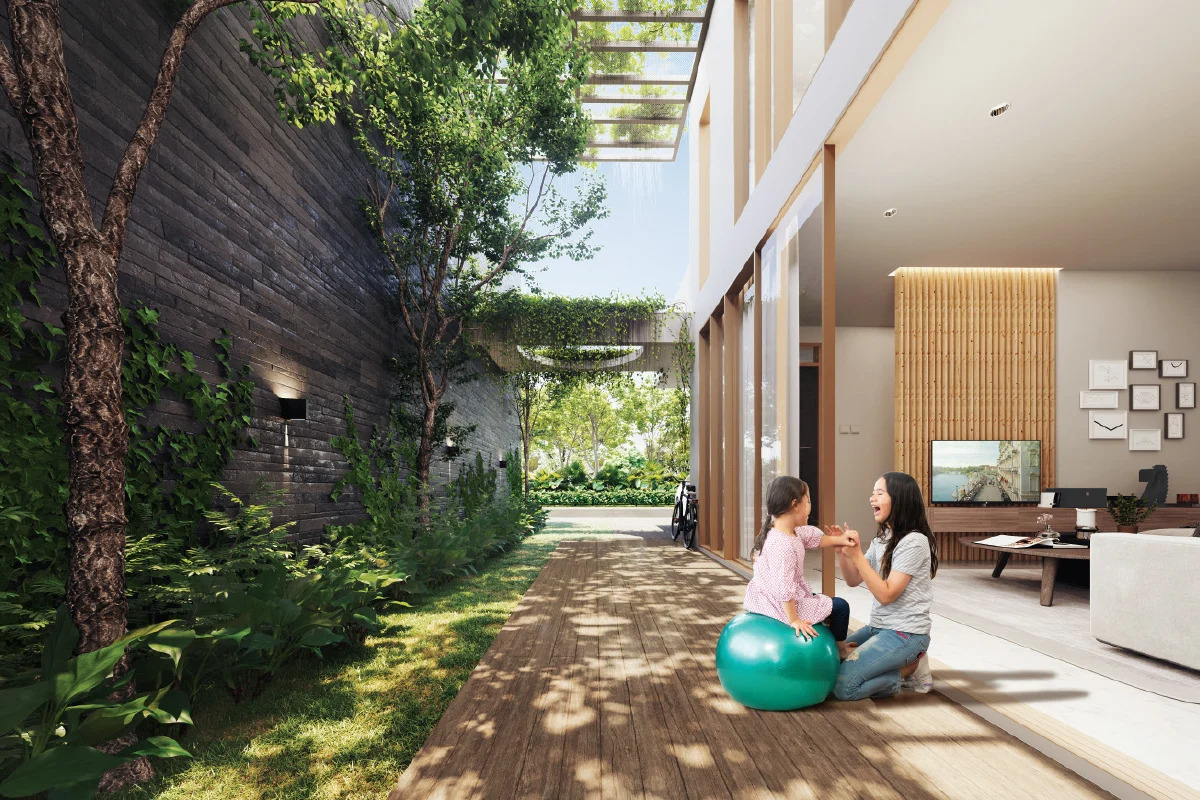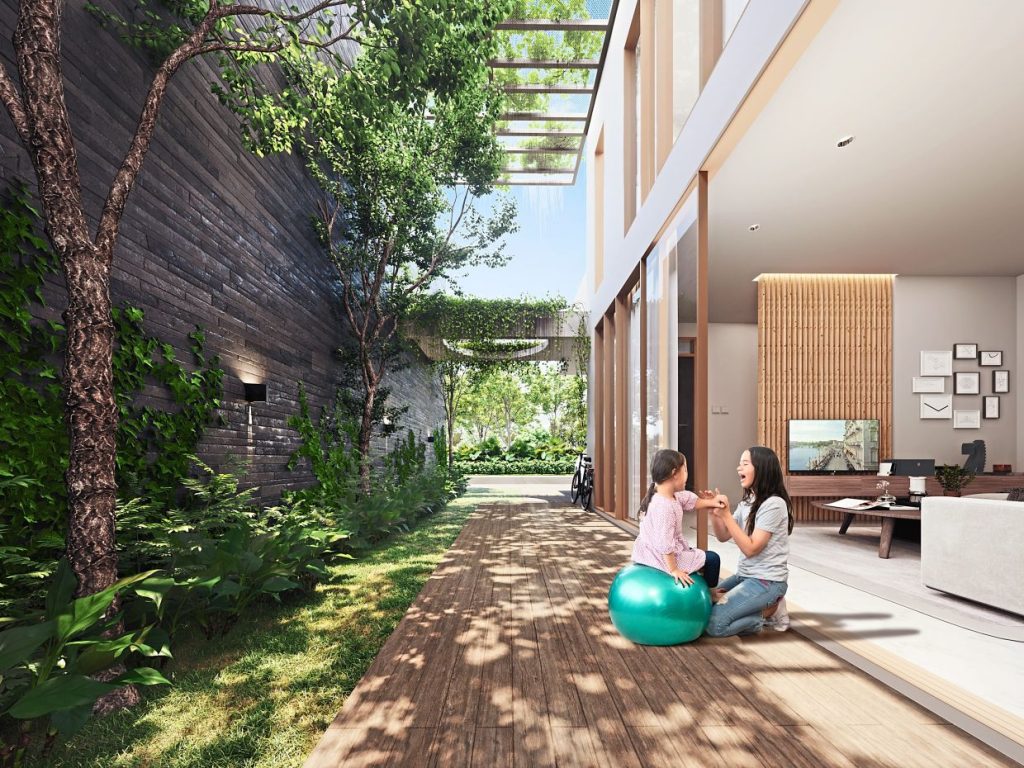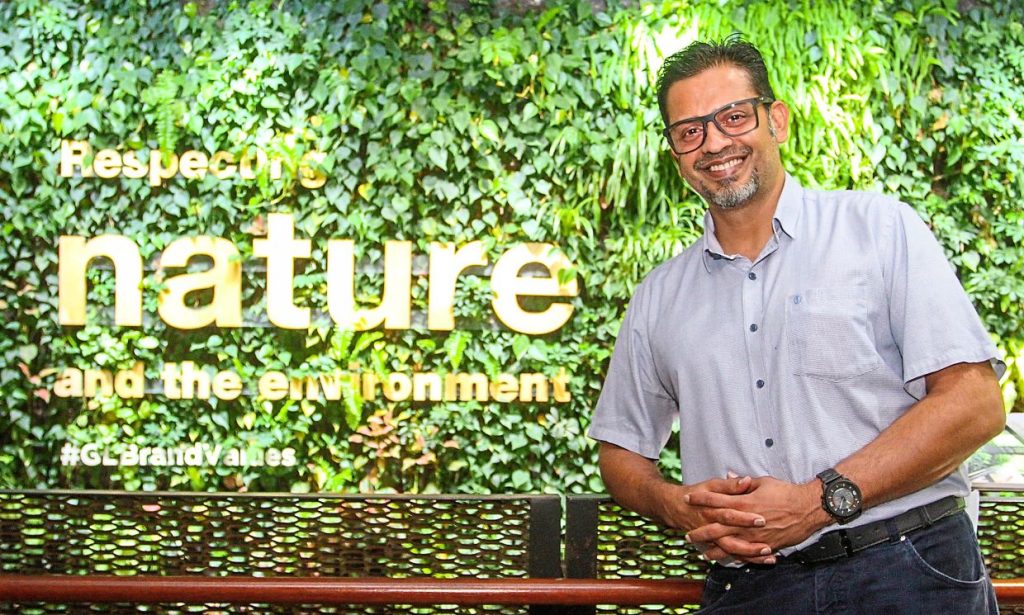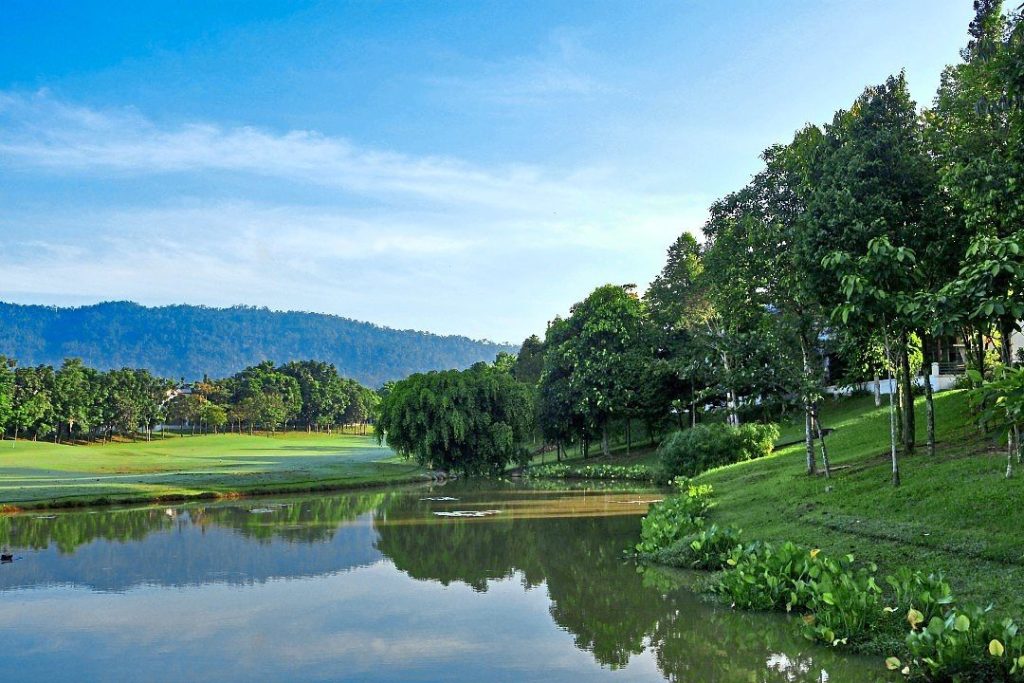
- About Us +
- Developments +
- Sustainability +
- Happenings +


Gamuda Land champions biophilic design to enable people to live in harmony with nature
TAKING a leaf from its roots in sustainable development over the years, Gamuda Land will continue to emphasise biophilic as the ‘hero design’ across all its future developments, be it residential or commercial.
With rising concerns on climate change and as all eyes become increasingly focused on environmental, social and governance (ESG) aspects across all industries, the focus on biophilic design – which in essence, seeks to encourage a strong connection between people and nature – will certainly serve the developer well.
However, biophilic design as a concept is not something that is entirely new to Gamuda Land.
According to its general manager Devendran M. Krishnamoorthy (Dev), biophilic design is intrinsically part of Gamuda Land’s DNA, as it has always focused on ‘listening to what the land has to tell us’ to find a balance between the built and natural environments that facilitates a viable, self-sustaining ecosystem within its developments.
This, he said, means understanding the context that it operates in and the land that it will build on, as well as how to not only protect, but also further enhance, the environment, as much as possible.
“Greenery has always been Gamuda Land’s strong point, but what we’re trying to push for is something that is very centred on biophilia, so it’s a much more concerted effort towards pushing it as an agenda,” he explained.

What’s new is how Gamuda Land has doubled down on its sustainability efforts in late June last year, by further defining its ESG goals, with a clear set of targets to map its path to a green economy via the Gamuda Green Plan (GGP) 2025.
Serving as a blueprint, the sustainability plan outlines tangible targets towards ESG considerations under four pillars, by addressing climate change and social development in the next five to 10 years.
Under Pillar 1 of the GGP 2025, ‘Sustainable Planning and Design’, it aims to achieve a 40% reduction in carbon emissions compared to business-as-usual by 2030.
The developer has committed to ensuring that all its future developments will be green building certified, including for international projects. In Malaysia, it has set internal mandatory requirements to ensure that all of its developments comply with Green Building Index (GBI) certification – at least GBI silver for commercial buildings and GBI-certified for residential projects.
Meanwhile, Gamuda Land’s international projects are all green-certified within their respective countries to their equivalent standards.
Developing a blueprint
In furthering its green agenda, Gamuda Land is emphasising on sustainable masterplanning and effective placemaking of shared facilities and green features to strike the right balance between developmental and environmental goals, in a way that benefits all parties.
This can be seen through Gamuda Land’s biophilic design features that seek to create places that encourage people to explore the outdoors and take part in activities together with family and friends for a healthier lifestyle.
It is perhaps best reflected through the masterplan design for the 1,530-acre Gamuda Cove, which has been recognised by the Malaysian Green Technology and Climate Change Corporation as the first five-diamond Low Carbon City Framework private township in Malaysia.
Nestled between Paya Indah Discovery Wetlands and Kuala Langat North Forest Reserve, Gamuda Cove intrinsically integrates greenery and biodiversity into a township that boasts a combination of residential and commercial buildings, merged with entertainment for different lifestyles and activities that are environmentally-focused.
These various elements are connected with sustainable modes of transportation via its multimodal transport network, which people can use to traverse the whole Gamuda Cove and have the opportunity to explore different places and experiences at their leisure.
He said, “For instance, we’ve got residences that are close to parks, which are incorporated with sustainable and connected walkways or cycling paths to the commercial areas. So when you stay here, you don’t really have a reason to drive a car.”

In terms of the urban environment, Gamuda Land has increased the density of greenery planting across the development – including lining the streets and walkways with greenery – while utilising the lakes on the land to form the source of irrigation for the plants, meaning that there is minimal to no need to take water from the grid.
To accelerate the growth of the plants, it has adopted the Miyawaki methodology to create denser forests that do not have to be maintained, thereby reducing maintenance to its parks and at the same time act as a filter and slow down the surface runoff.
Gamuda Land goes as far as to scrutinise the materials it employs in construction, with Dev pointing to its walkways in Gamuda Cove as an example of its sustainable drainage systems (SuDS).
Mimicking Mother Nature’s system of drainage that allows rainwater to seep into the ground, SuDS channels the rainwater runoff into a waterbody like a river, pond or basin, provides water storage on-site and slows down the flow of water.
He shared, “Another goal for our walkways is to use permeable materials. As the materials aren’t concrete, they don’t really absorb and release a lot of heat, so there’s a dual purpose.
“One is to form a permeable material to absorb rainwater and slow down the effects of rainwater as well.”
These efforts, in addition to restoration of the wetlands, are part of Gamuda Land’s flood mitigation methods.
“All of it forms the whole ecosystem of sustainable design and it’s something we’ve tried to get into more detail with in Gamuda Cove, so we can form a strong blueprint that we can take to all our other townships,” he said.
Gamuda Land will be prioritising renewable energy for its future developments, especially its commercial projects, as it allocates 30% of its roofs to generate solar energy as part of its provision for GBI.
Even Gamuda Cove’s rainforest-themed SplashMania will incorporate renewable energy, as Dev said, “The upcoming SplashMania relies on solar energy.”
Moreover, the planning comes full cycle, with 100% of the garden waste from its parks composted and mixed with other elements to produce fertiliser that is then used for the landscaping.
“There has to be a continuous thought process that we must put in, into all the connected elements within our developments.
“This will be part of the planning process and extend to the initiatives that we’re putting into place so that we have a more comprehensive, cohesive planning over the years,” he added.
Balancing benefit and cost
Even so, cost still has to be factored into consideration.
He said, “We’re always working towards pairing what we’re trying to do with the available systems and technology out there in the market, which are within cost, as the balance between cost and benefit is one of the key things we have to think about as well.
“Everything we’re doing right now will encompass an increasing cost. Larger windows and openings, higher quality or more durable materials, or the introduction of more landscape and biophilic design – all of them have a relative impact on cost.”

To not translate this cost to its customers, Gamuda Land envisions that its digital IBS will be the future of construction with robotic automation, as it will reduce manpower by 60% and is faster by 40% compared to conventional construction.
Further, Dev noted that the controlled environment in Gamuda Land’s digital IBS can reduce wastage to less than 1% for on-site set-ups.
The developer is looking to adopt 100% digital IBS across its landed and high-rise developments as part of GGP 2025’s Pillar 4.
That said, he stressed that technology will continue to evolve and become more affordable over time, which will mean that Gamuda Land will also be able to improve on its efforts to be scalable and sustainable.
Towards a sustainable agenda
In summing up Gamuda Land’s pursuit of sustainability, Dev said that biophilic design is just the start.
“There’s a long way to go in terms of addressing climate change. We can’t keep doing things as we have done in the last 50 years. We have to move alongside the current global direction towards a more sustainable agenda.
“As a town-maker, if we don’t address climate change, what kind of legacy are we leaving our children and grandchildren? There’s no alternative.
This is why we intend to approach nature and biodiversity in the right way,” he said.
In its aim to do right by nature, Gamuda Land will continue incorporating biophilic designs into its upcoming launches in Gamuda Cove, Gamuda Gardens and twentyfive.7’s hero products – this will also be reflected in its international projects such as its 272 Normanby Road project in Melbourne, Australia.
He added, “Beyond that, we will continue to improve for all our future hero and premium products. Biophilic will be our bread-and-butter design, regardless of residential or commercial properties.”
For Gamuda Land, the vision at the end of the day is to be the leader in sustainable design and low carbon cities and townships.